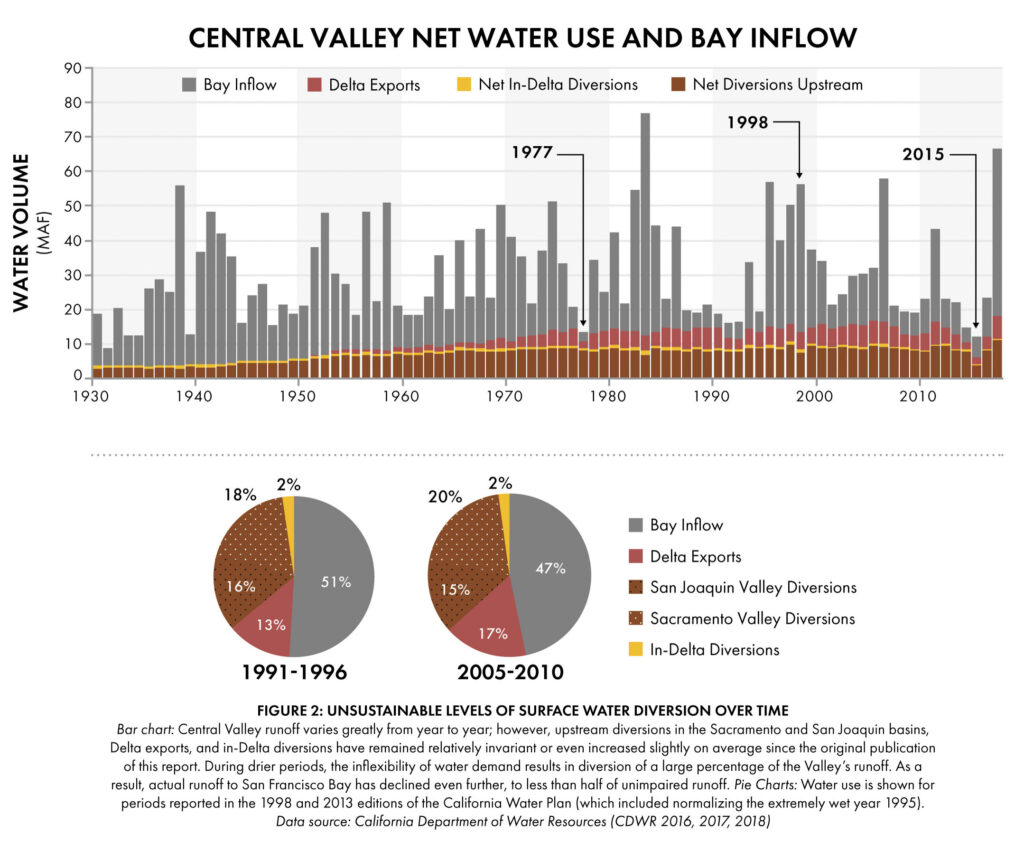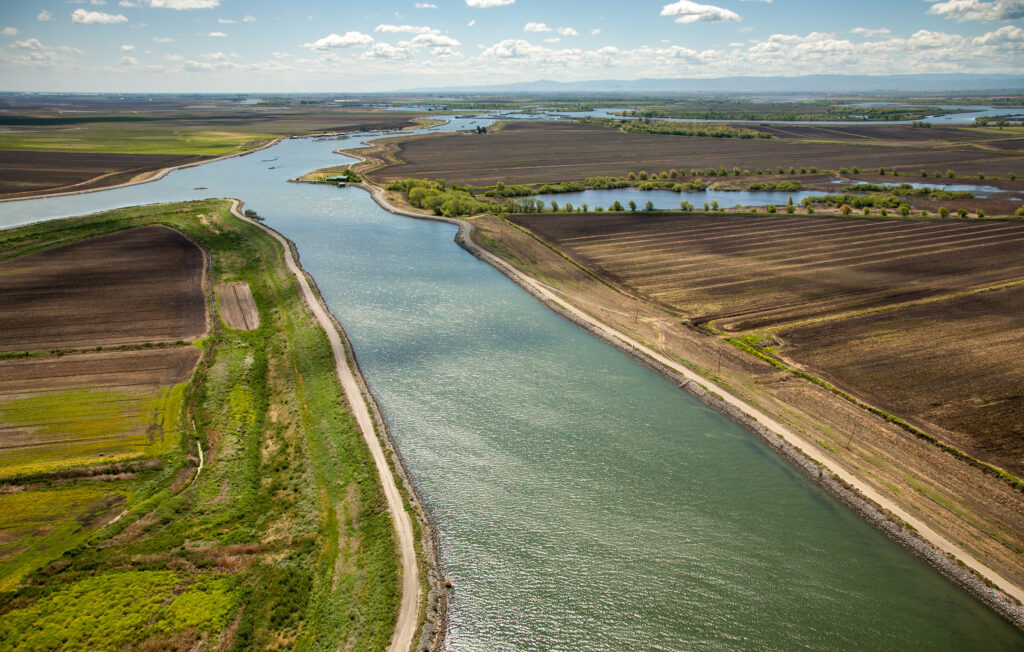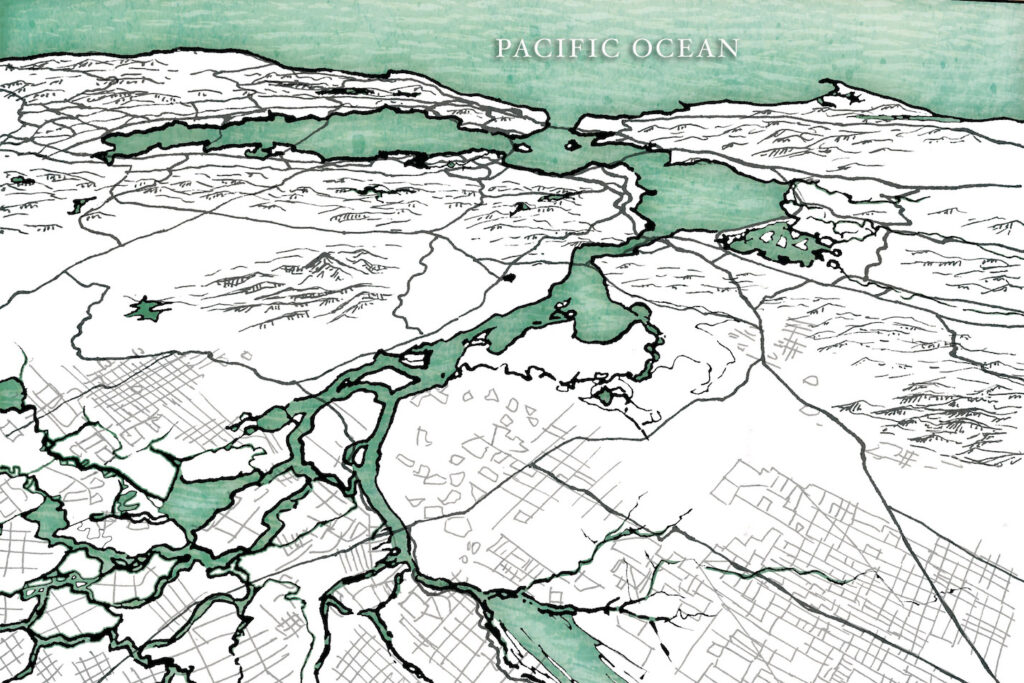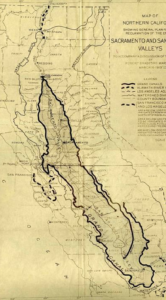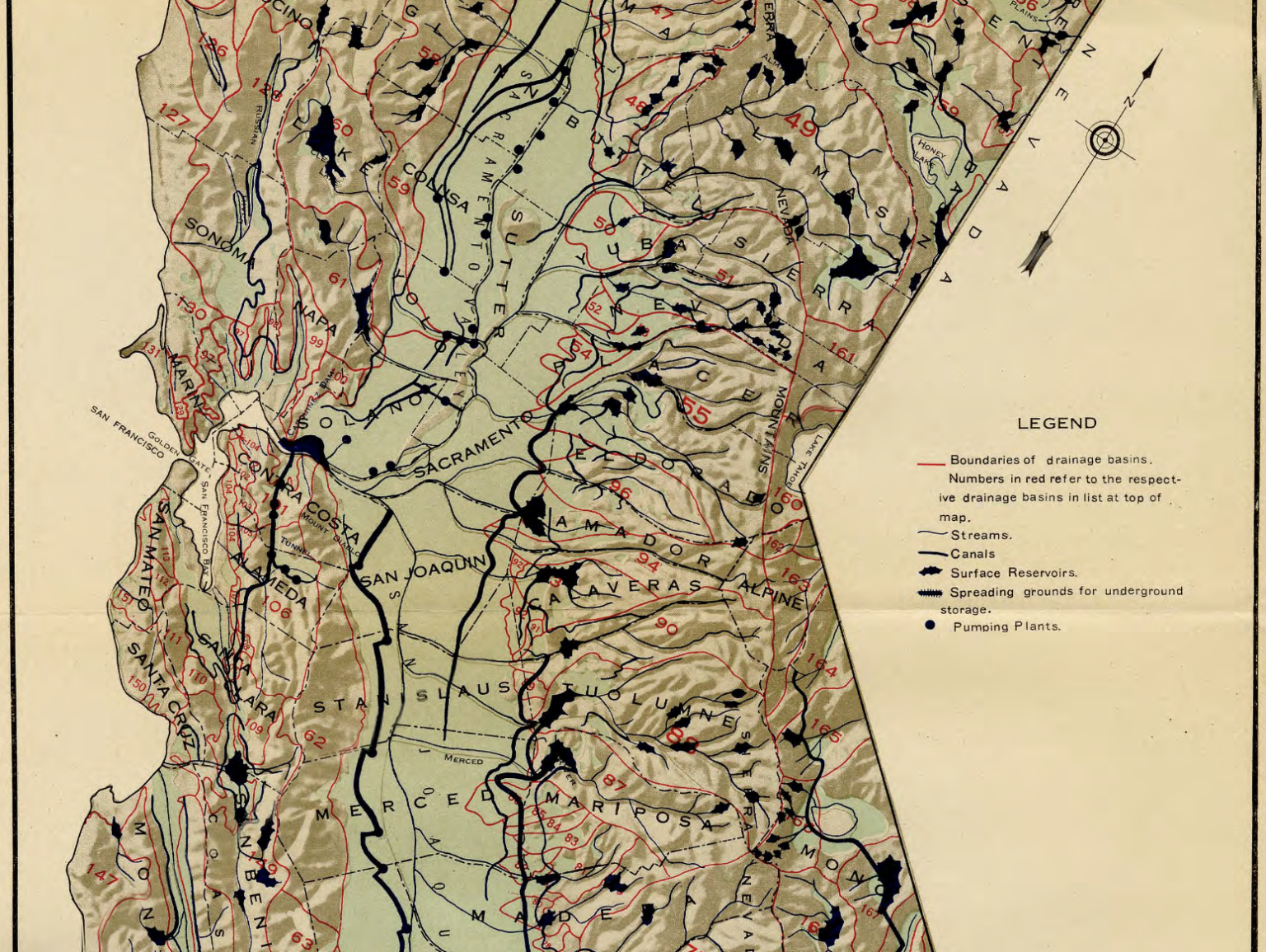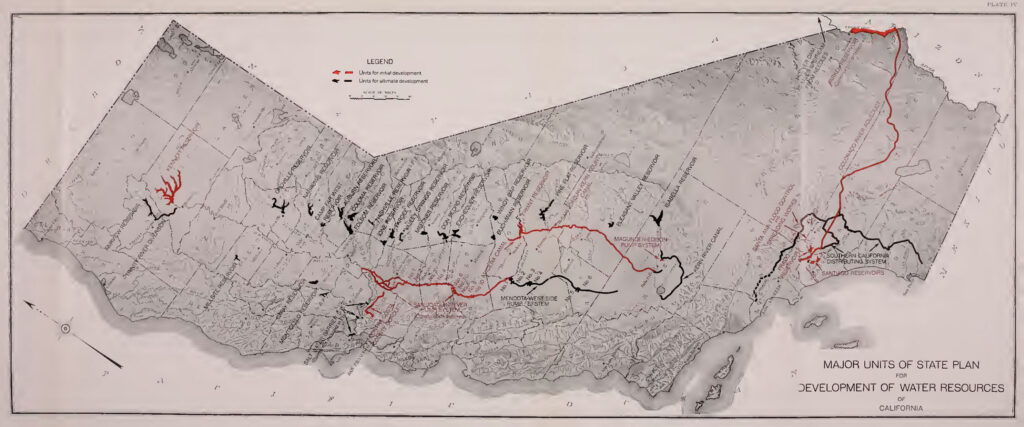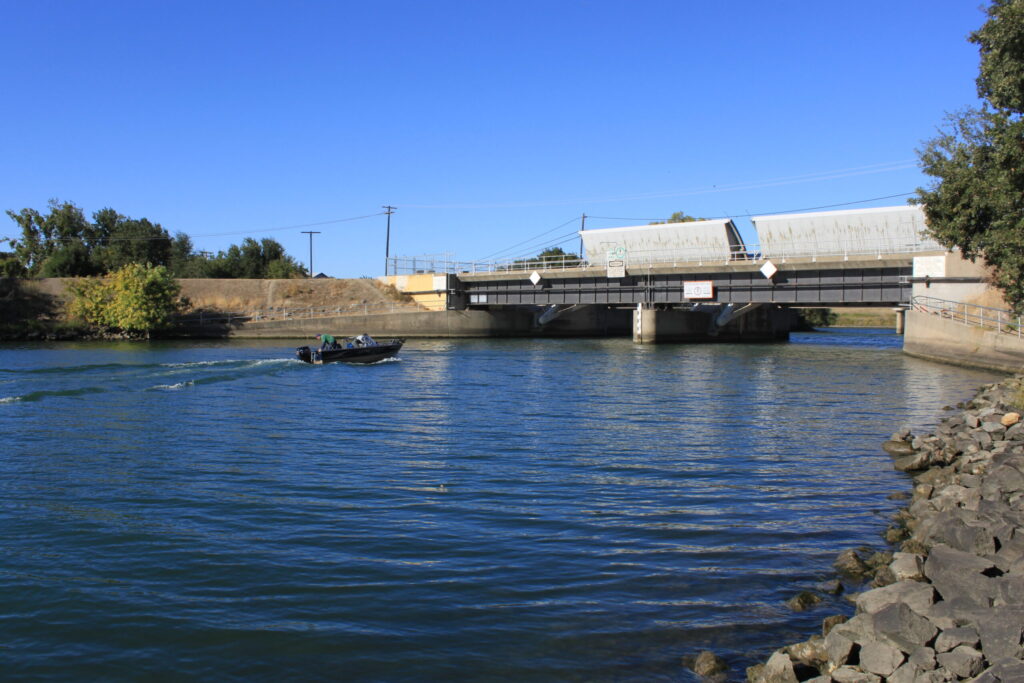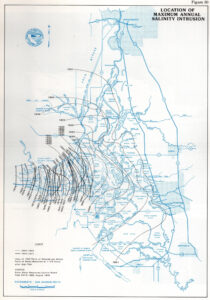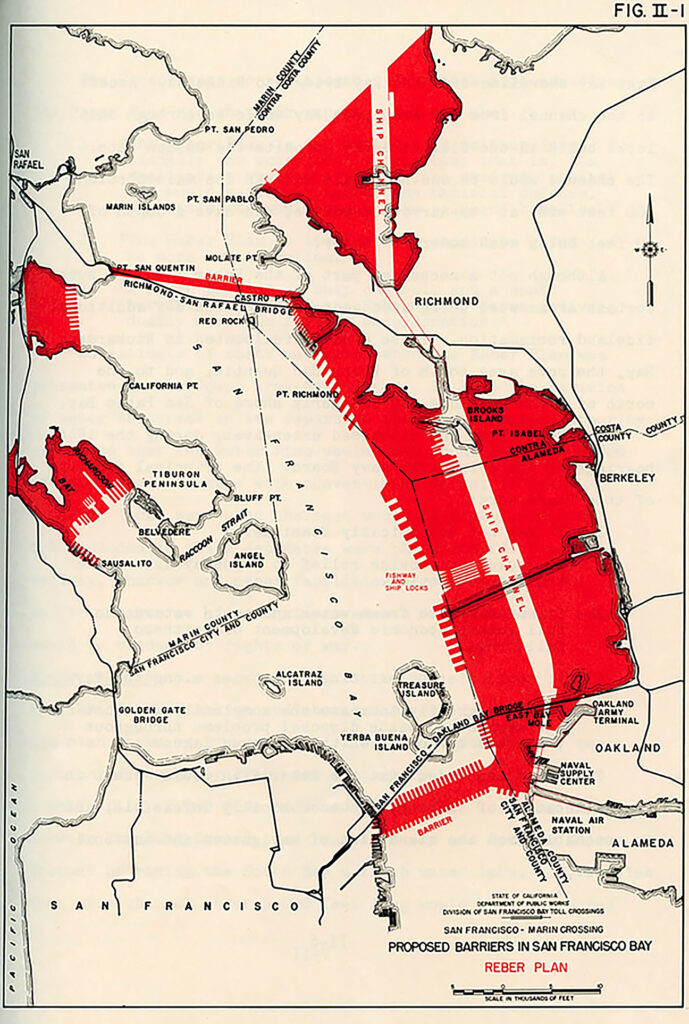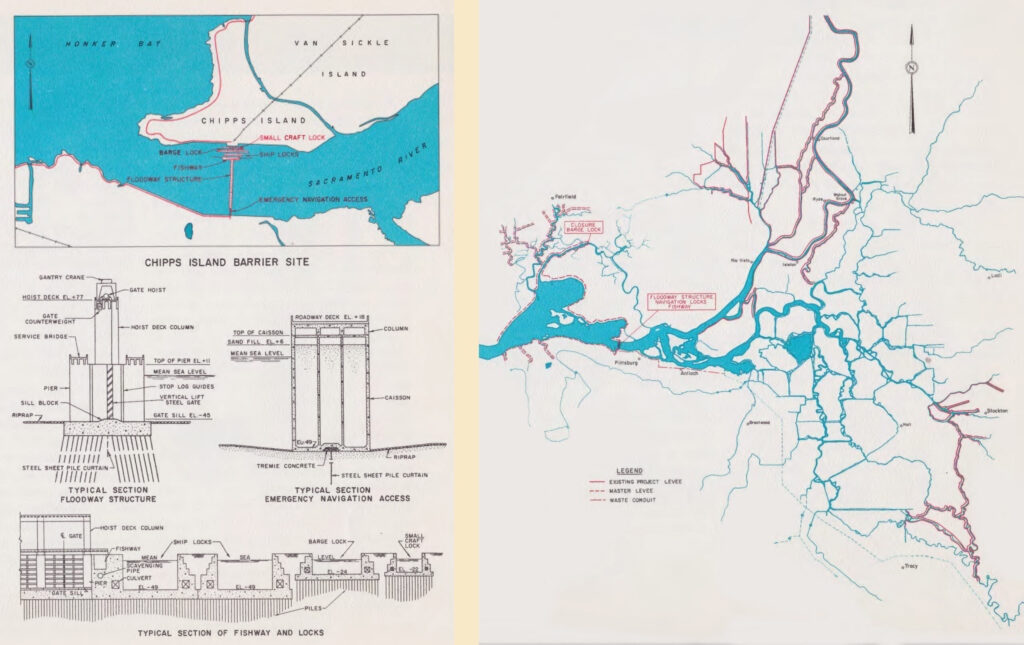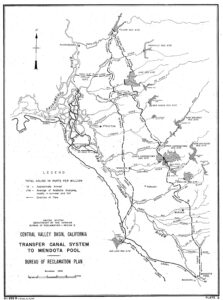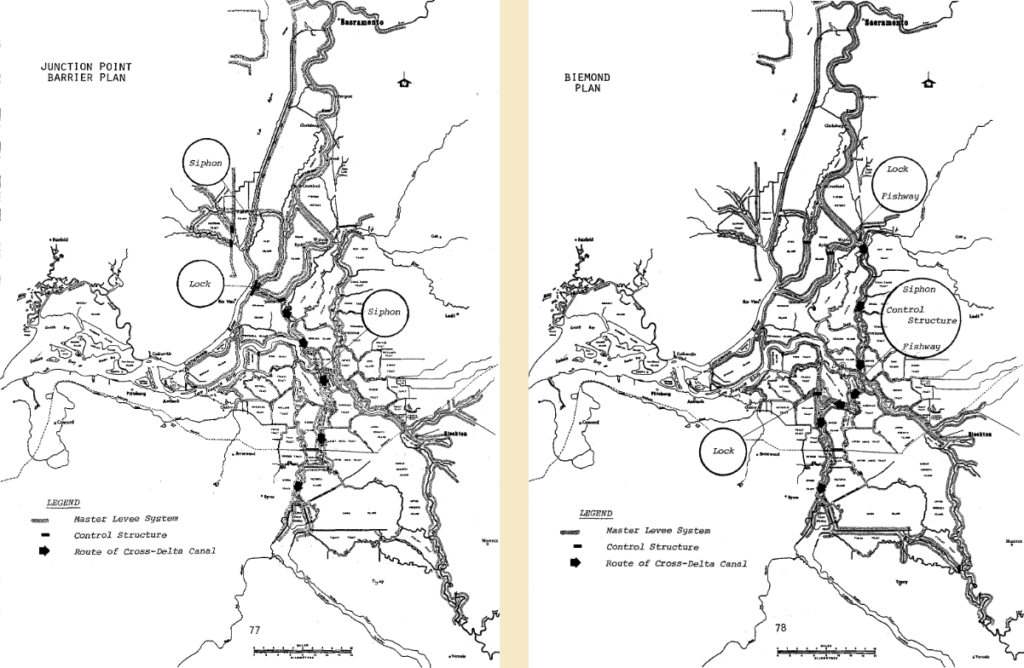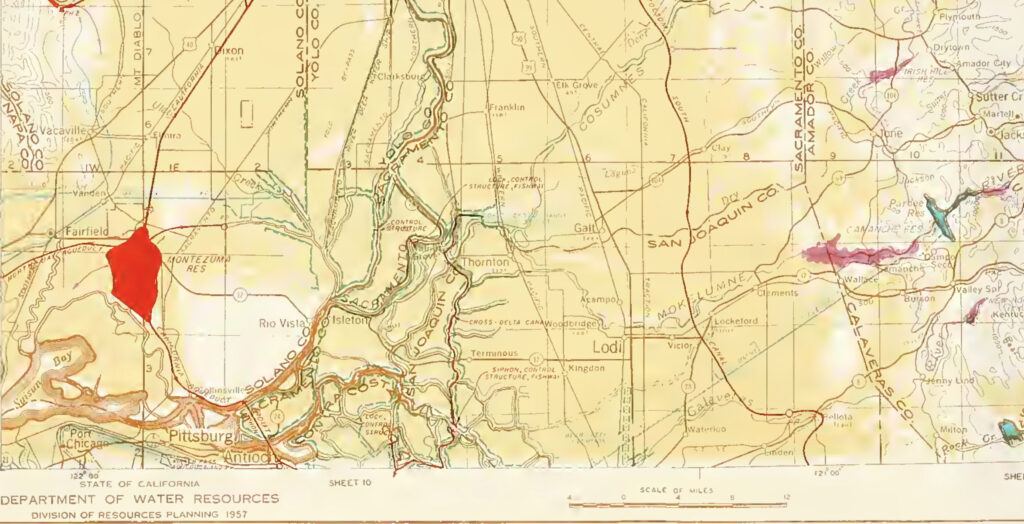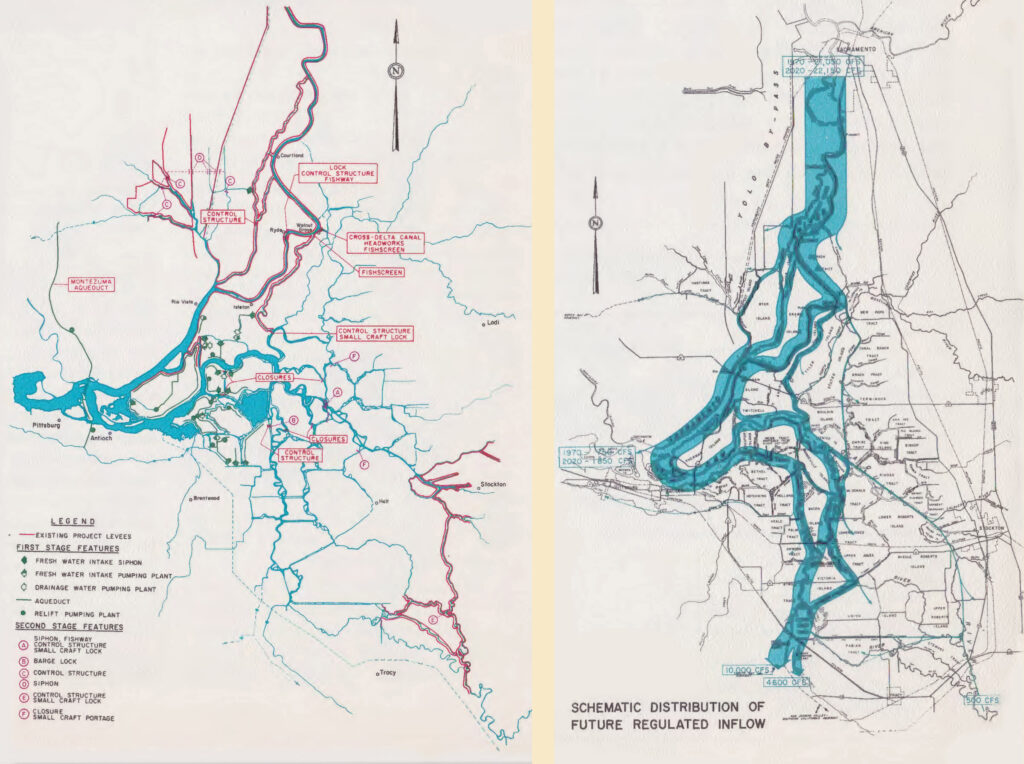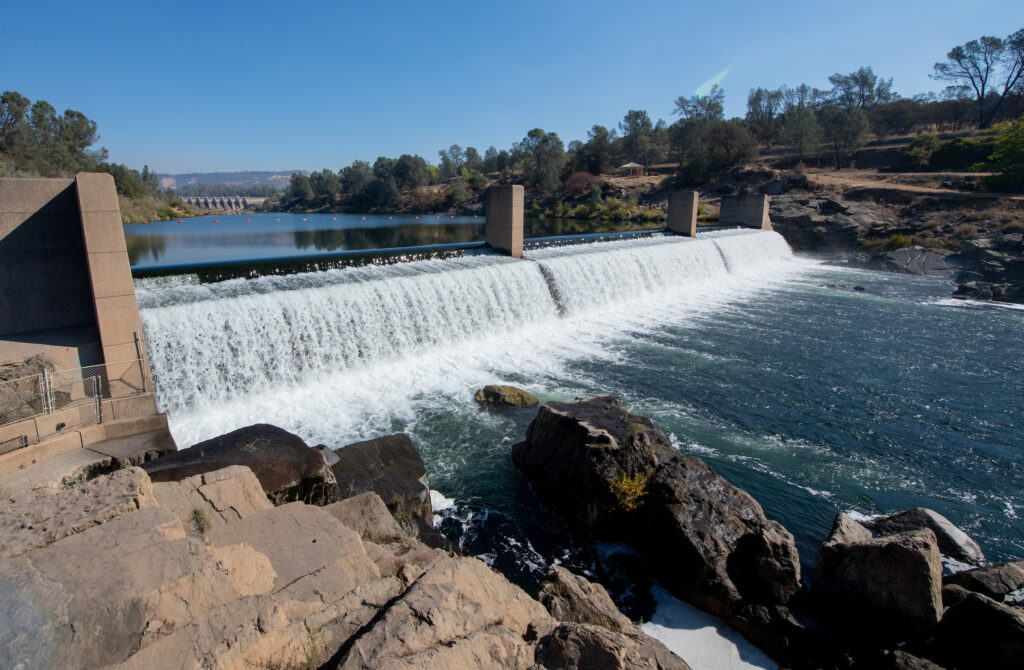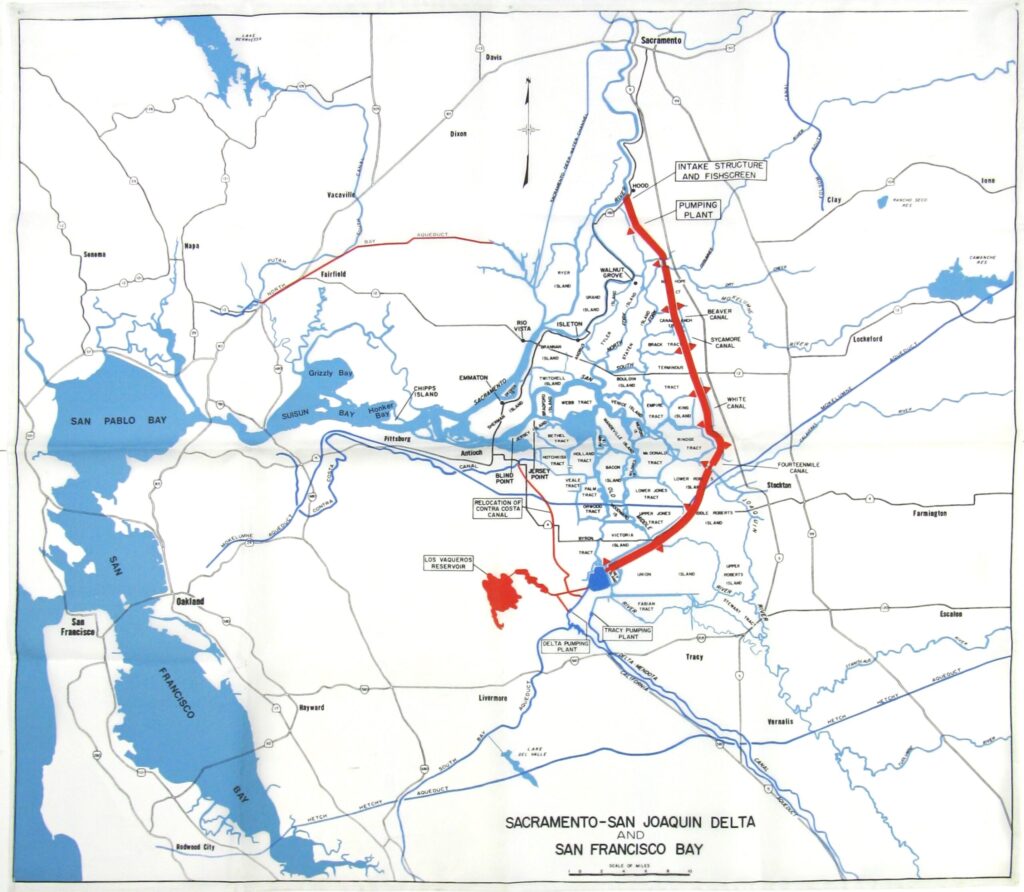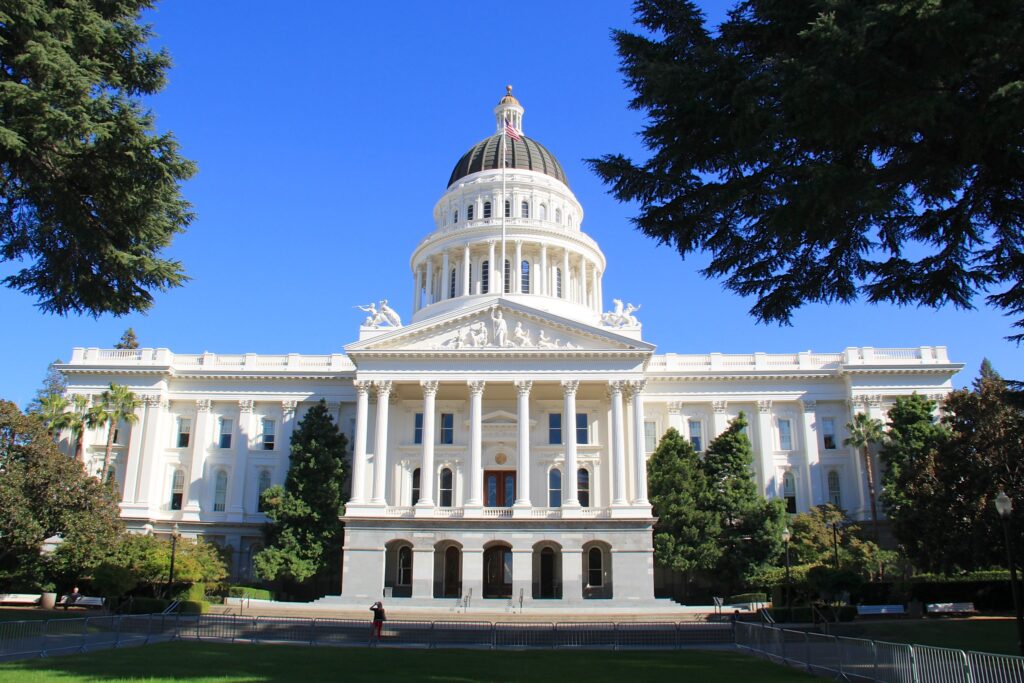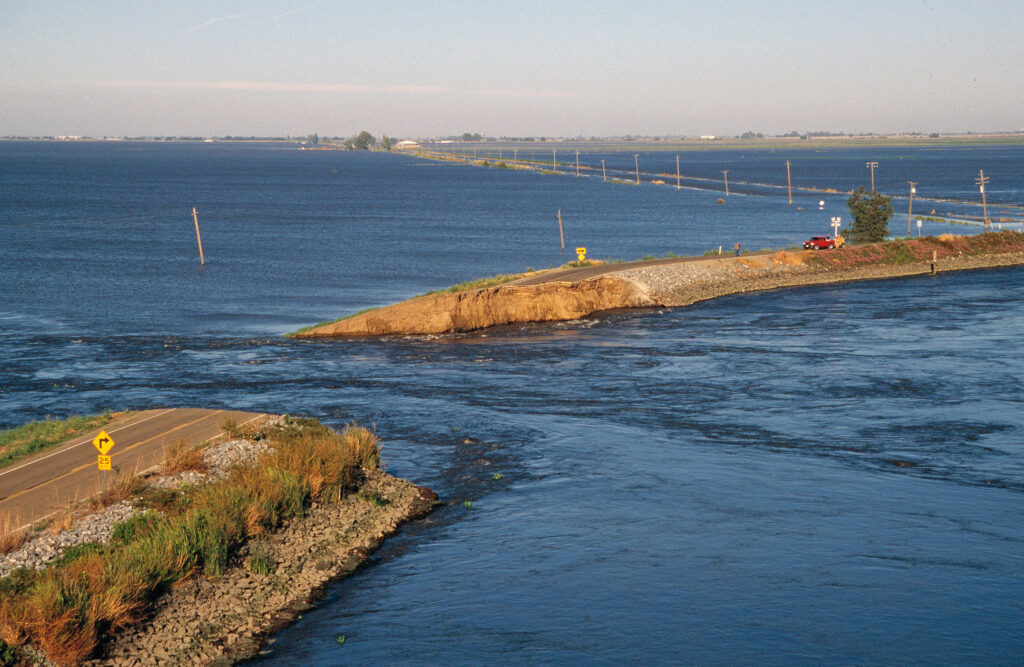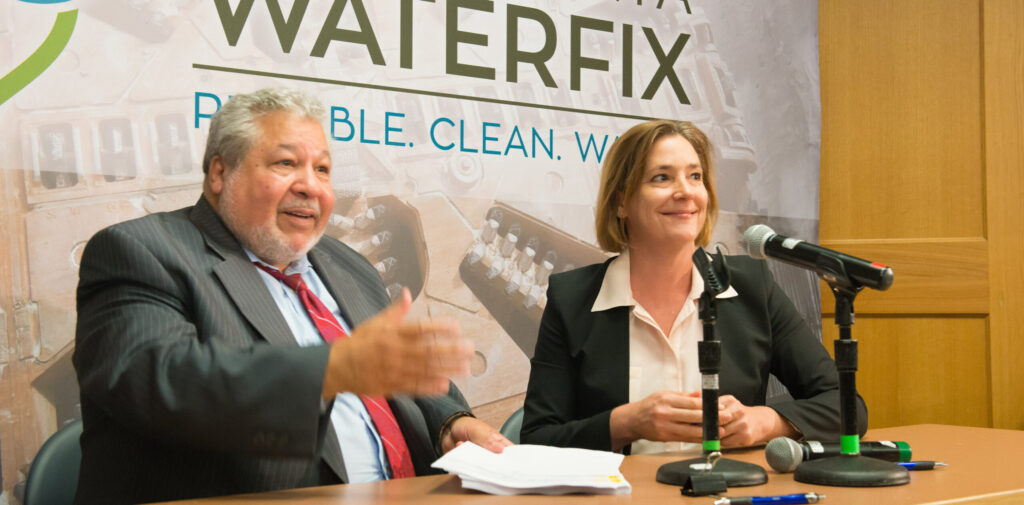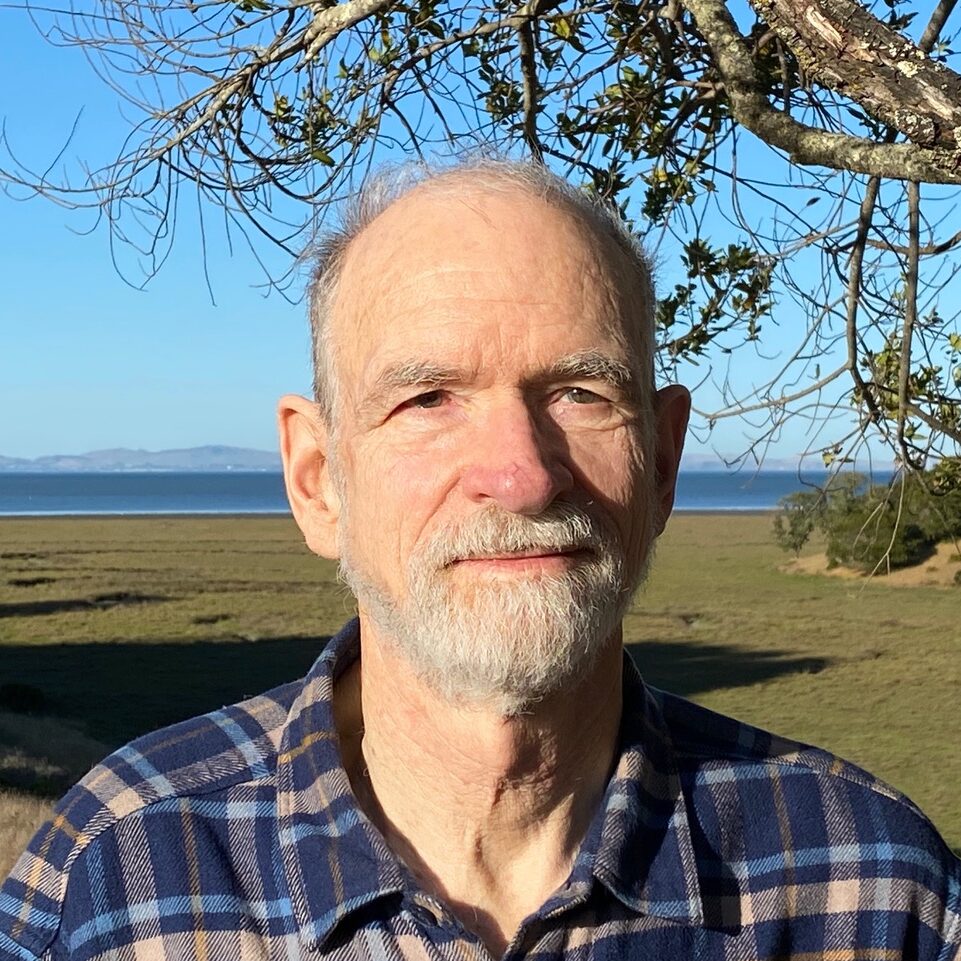- California Department of Water Resources (DWR), California Water Plan Update 2018, Supporting Documentation for Water Portfolios (April 2019). Delta Conveyance Project: A Proposal to Protect Water Supplies for the Future (2022).
- J. F. Arthur, M.D. Ball, and S.Y. Baughman, Summary of Federal and State Water Project Environmental Impacts in the San Francisco Bay-Delta Estuary, California, J. T. Hollibaugh, ed., San Francisco Bay: The Ecosystem, 1996. Where Have All the Fish Gone? Interactive Factors Producing Fish Declines in the Sacramento-San Joaquin Estuary, J. T. Hollibaugh, ed., San Francisco Bay: The Ecosystem, 1996.
- Governor’s Delta Vision Blue Ribbon Task Force, Delta Vision: Our Vision for the California Delta (2008). The Bay Institute, From the Sierra to the Sea, 2d. ed, 2018, 284.
- DWR, California Water Plan Update 2018, Supporting Documentation for Water Portfolios, 17.
- Derived from Dayflow – California Natural Resources Agency Open Data. 2011 totals were higher, but this is considered an anomalous year.
- The Bay Institute, From the Sierra to the Sea, 2d. ed, 2018, 284-285.
- Delta Vision, 37, supplemented by From the Sierra to the Sea, 284.
- Public Policy Institute of California, Comparing Futures for the Sacramento-San Joaquin Delta (2008).
- Eric A. Stene may have this report in mind when he states: “As early as the 1870s, ideas appeared planning to transfer excess water from the Sacramento River to the often parched tracts in the San Joaquin Valley.” If so, his description is inaccurate. Stene, The Central Project Overview (U.S. Bureau of Reclamation), 2.
- Calif. Division of Water Resources, Bulletin No. 22, Volume I, Report on Salt Water Barrier below Confluence of Sacramento and San Joaquin Rivers, California, (1929), 39. Bulletin No. 76, Report to the California Legislature on the Delta Water Facilities as an Integral Feature of the State Water Resources Development System (1960), 4. I did not find reference to barrier plans in Hall, Report of the State Engineer to the Legislature of the State of California (1880).
- Stene, The Central Valley Project Overview (U.S. Bureau of Reclamation) 4-5.
- Col. Robert Bradford Marshall, Irrigation of Twelve Million Acres in the Valley of California(Sacramento: Calif. State Irrigation Association, 1920), 7. On the Association, see Keith Harris Truman, Colonel Robert Bradford Marshall and the Central Valley Project of California: A seminar paper presented to Professor George Hammond, June 1960.
- Marshall, Irrigation of Twelve Million Acres, 8-10, map. Another extant copy of the proposal sites the dam instead “above and near Redding.”
- Office of Planning and Research and DWR, The California Water Atlas (1979), 48; Robert M. Hundley, The Great Thirst: Californians and Water, 1770s to 1990s (University of California Press, 1992), 239-40.
- Marshall, 7; Hundley, 239-40.
- Calif. Division of Water Resources, Bulletin No. 4: Water Resources of California: A Report to the Legislature of 1923 (1923), 13.
- Calif. Division of Water Resources, Bulletin No. 4, 47.
- Calif. Division of Water Resources, Bulletin No. 22: Report on Salt Water Barrier (1929), 24, 28.
- Calif. Division of Water Resources, Bulletin No. 28: Economic Aspects of a Salt Water Barrier Below Confluence of Sacramento and San Joaquin Rivers (1931), 24, 36-37.
- Calif. Division of Water Resources, Bulletin No. 12: Summary Report on the Water Resources of California and a Coordinated Plan for Their Development (1927), 42.
- Calif. Division of Water Resources, Bulletin No. 25: Report to the Legislature of 1931 on State Water Plan 1930 (1931), 42; Bulletin No. 27: Variation and Control of Salinity in Sacramento San-Joaquin Delta and Upper San Francisco Bay (1931), 41; W. Turrentine Jackson and Alan M. Paterson, The Sacramento-San Joaquin Delta. The Evolution and Implementation of Water Policy: An Historical Perspective (Davis: Calif. Water Resources Center, 1977), 29-30.
- City of Antioch, Brackish Water Desalination Facility Draft Environmental Impact Report (2018), 2-6.
- Henry Holsinger, Necessity for Comprehensive Adjudication of Water Rights on the Sacramento and San Joaquin Rivers in Aid of the Central Valley Project, in U.S. Congress, Central Valley Project Documents, Part 2: Operating Documents (1957), 768, 774; Tim Stroshane, Drought, Water Law, and the Origins of California’s Central Valley Project (Reno: University of Nevada Press, 2016), 148.
- Bulletin No. 25, 36-37.
- San Francisco Estuary Institute, Sacramento-San Joaquin Delta Historical Ecology Investigation: Exploring Pattern and Process (Richmond, 2012), 124, 254.
- Bulletin No. 25, 95-96.
- Mary Montgomery and Marion Clawson, History of Legislation and Policy Formation of the Central Valley Project (Berkeley: USDA Bureau of Agricultural Economics, 1946), 2; Eric A. Stene. Central Valley Project: Overview, 6-7.
- Comments of DWR on a draft of this paper, March 2022.
- Jackson and Paterson, 42. Bulletin No. 22 specifies 3,500 (48), Bulletin No. 25, 3,300 (80).
- Jackson and Paterson, 44.
- Interagency Delta Committee, Draft of Task Force Report to the Interagency Delta Committee on a Coordinated Plan for the Sacramento-San Joaquin Delta (1964), II-2; Jackson and Paterson, 42-43.
- Jackson and Paterson, 50-51; Office of Planning and Research and DWR, The California Water Atlas (1979), 56.
- Congressional Research Service, Central Valley Project: Issues and Legislation, updated June 3, 2021. Unlike state pumps, federal ones tend to run constantly (see Arthur et al. in J. T. Hollibaugh, ed., San Francisco Bay: The Ecosystem, 455).
- DWR, Sacramento-San Joaquin Delta Atlas (reprinted 1995), 22.
- Jackson and Paterson, 66.
- Jackson and Paterson, 70. Ultimate source U.S. Army Corps of Engineers, San Francisco District. Technical Report on Barriers. July 1963, 180.
- U.S. Congress, Central Valley Basin: A Comprehensive Departmental Report on the Development of the Water and Related Resources of the Central Valley Basin, and Comments from the State of California and Federal Agencies (Senate Document 113, Eighty-First Congress, First Session, 1949), 13, 91-92.
- Central Valley Basin, 22.
- DWR, Bulletin No. 3: The California Water Plan (1957), 3.
- Office of Planning and Research and DWR, The California Water Atlas, 50-51.
- State Water Resources Board, Bulletin No. 1: Water Resources of California, 1951.
- State Water Resources Board, Bulletin No. 2: Water Utilization and Requirements of California, 1955.
- Calif. Division of Water Resources. Report on Feasibility of Feather River Project and Sacramento-San Joaquin Delta Diversion Projects Proposed as Features of the California Water Plan (1951). There is a claim that this report already proposed a Peripheral Canal (DWR, The California State Water Project: Past, Present, Future, 2000/2006, 12), but this seems not to be the case.
- Jackson and Paterson, 68.
- This idea was unveiled in Water Project Authority of the State of California, Report to the California State Legislature Pursuant to the Abshire-Kelly Salinity Control Act of 1952 on the Feasibility of Construction by the State of Barriers in the San Francisco Bay System (1955), 33 and graphic, no p.n. It was refined in Water Project Authority, Bulletin No. 60, Report to the California State Legislature Pursuant to the Abshire-Kelly Salinity Control Act of 1952 on the Feasibility of Construction by the State of Barriers in the San Francisco Bay System, 1957. See also Jackson and Paterson, 75.
- Division of Water Resources, Program for Financing and Constructing the Feather River Project (1955).
- DWR, Bulletin No. 3: The California Water Plan (1957), xv.
- The California Water Plan, 185-187.
- Harvey O. Banks and Jean O. Williams (State Water Contractors), The Burns-Porter Act: A California High Water Mark (1984), 7.
- California Water Code 12934 (3).
- DWR, Bulletin No. 76: Report to the California State Legislature on the Delta Water Facilities as an Integral Feature of the State Water Resources Development System (1960), 33-34.
- Increased to 1,500 CFS in a later version of the plan.
- DWR, Bulletin No. 76, Report to the California State Legislature on the Delta Water Facilities, 34.
- DWR, Alternatives for Delta Water Transfer (1983), 12.
- Jackson and Paterson, 93.
- Jackson and Paterson, 69.
- Calif. Division of Water Resources, Bulletin No. 28: Economic Aspects of a Salt Water Barrier below Confluence of Sacramento and San Joaquin Rivers (1931), 33.
- Central Valley Basin, 245.
- Central Valley Basin, 249.
- Central Valley Basin, 257.
- Central Valley Basin, 414. In 1946, the State did favor leaving North Coast rivers unexploited for the benefit of anadromous fish. A decade later, in the State Water Plan of 1957, it wanted them all dammed multiple times, with the exception of the South Fork of the Eel (Bulletin No. 3: State Water Plan, 172-73).
- Calif. Department of Fish and Game, Fish Bulletin 133. Ecological Studies of the Sacramento-San Joaquin Estuary, Part 1: Zooplankton, Zoobenthos, and Fishes of San Pablo and Suisun Bays, Zooplankton and Zoobenthos of the Delta, 5.
- Calif. Department of Fish and Game, Ecological Studies of the Sacramento-San Joaquin Estuary, A Decennial Report, 1961-1971 (1972), 40.
- Interagency Delta Committee, Draft of Task Force Report to the Interagency Delta Committee on a Coordinated Plan for the Sacramento-San Joaquin Delta (1964) and Proposed Report on Plan of Development, Sacramento-San Joaquin Delta (1964), followed byPlan of Development, Sacramento-San Joaquin Delta(1965). The Draft of Task Force Report is the fullest statement.
- Interagency Delta Committee, Draft of Task Force Report, III, 53-74; Jackson and Paterson, 97.
- Jackson and Paterson, 98; Interagency Delta Committee, Appendix: Review Comments and Statements on Plan of Development, Sacramento-San Joaquin Delta (1965), 31.
- Jackson and Paterson, 99.
- Jackson and Paterson, 102.
- Jackson and Paterson, 102-106.
- DWR, Summary of Draft Environmental Impact Report Peripheral Canal Project (1974), 2.
- Jackson and Paterson, 107.
- Jackson and Paterson, 149.
- Orrin H. Harder, ed, Should the Peripheral Canal Be Built?, The Commonwealth (Commonwealth Club) 69, no. 7 (September 15, 1975), 19.
- Jackson and Paterson, 155.
- Jackson and Paterson, 161.
- DWR, The California Water Plan: Outlook in 1974 (1974), 16.
- Jackson and Paterson, 162; Friends of the Earth v. Coleman. 513 F.2d 295 (1975).
- DWR, Summary of Draft Environmental Impact Report Peripheral Canal Project (1974), 23.
- Jackson and Paterson, 173; DWR, Phase II: Alternative Courses of Action to Provide Delta Protection and Adequate Water Supplies for California (1976).
- SB 200 text from Water Facilities Including a Peripheral Canal [Proposition 9], 1982.
- Water Resources Development and Protection [Proposition 8], 1980.
- Orrin H. Harder, ed., Should the Peripheral Canal Be Built? The Commonwealth (Commonwealth Club) 69, no. 7 (September 15, 1975), 28.
- Douglas Gwynn et al., The California Peripheral Canal: Who Backed It, Who Fought It, California Agriculture, January-February 1983, 22.
- Water Facilities Including a Peripheral Canal [Proposition 9].
- Gwynn, 24.
- The new outlook is reflected in DWR, The California Water Plan: Projected Use and Available Water Supplies to 2010 (1983). See also John Hart, ed., Water 1982: After Proposition 9—Where Do We Go from Here? A California Tomorrow Special Report (California Tomorrow, Spring 1982).
- DWR, Alternatives for Delta Water Transfer (1983), 40.
- Clara Germani, California Water Seen as Environment Issue, Not North vs. South, Christian Science Monitor, June 13, 1984. Paul Jacobs, Pared-Down Water Plan to Be Submitted in 1987, Los Angeles Times, June 17, 1985.
- United States v. State Water Resources Control Board (1986), 182 Cal.App.3d 82.
- DWR and U.S. Bureau of Reclamation, Agreement Between the United States of America and the State of California for Coordinated Operation of the Central Valley Project and the State Water Project (1986).
- DWR, The California State Water Project: Past, Present, Future, 2000/2006, 40. Agreement Between the Department of Water Resources and the Department of Fish and Game to Offset Direct Fish Losses in Relation to the Harvey O. Banks Delta Pumping Plant (1986).
- State of California and United States. The San Francisco Bay-Delta Agreement. Principles for Agreement on Bay-Delta Standards Between the State of California and the Federal Government (1994).
- Principles for Agreement on Bay-Delta Standards Between the State of California and the Federal Government, (1994); Michael Haneman and Caitlin Dyckman. The San Francisco Bay-Delta: A Failure of Decision-making Capacity, Environmental Science & Policy 12 (2009), 720.
- CALFED Bay-Delta Program, Programmatic Record of Decision, 3.
- Programmatic Record of Decision, 42, 51.
- DWR, Final Value Planning Study Report for Through Delta Facility (2007), I-5.
- Still Imperilled, Still Important: The Little Hoover Commission’s Review of the CALFED Program (2005).
- Ted Somer et al., The Collapse of Pelagic Fishes in the Upper San Francisco Estuary. Fisheries 32, no. 6 (June 2007), 270-277.
- Derived from Dayflow – Datasets – California Natural Resources Agency Open Data.
- U.S. District Court, Eastern District of California, Natural Resources Defense Council v. Kempthorne, Order Granting in Part and Denying in Part Plaintiffs’ Motion for Summary Judgment (May 25, 2007), 9-11.
- Public Policy Institute of California, Dealing with the Delta: Envisioning Futures, Finding Solutions (Research Brief 114, 2007).
- Delta Vision, 15.
- Public Policy Institute of California, Comparing Futures for the Sacramento San Joaquin Delta, (2009).
- Kelly Zito, Spotlight on Delta in Coming State Water Fight, San Francisco Chronicle, August 9, 2009.
- DWR, Final Value Planning Study Report for Through Delta Facility, June 2007, 2-3.
- New York Times Energy & Environment Blog; California Adds ‘Delta Tunnel’ to List of Potential Water Supply Solutions, August 7, 2009.
- U. S. Bureau of Reclamation et al., Bay Delta Conservation Plan Draft Environmental Impact Statement / Environmental Impact Report (2013). Delta Independent Science Board. Review of the Draft BDCP EIR/EIS and Draft BDCP (2014).
- The State Auditor complained that the analysis necessary to support this contention had not been done. Calif. State Auditor, DWR: The Unexpected Complexity of the California WaterFix Project Has Resulted in Significant Cost Increases and Delays (2017), 33-35.
- DWR et al. Bay-Delta Conservation Plan/California WaterFix. Partially Recirculated Draft EIR/Supplemental Draft EIS (2015).
- Peter Fimrite, “Brown’s 2-Tunnel Delta Plan On Again,” San Francisco Chronicle, April 11, 2018.
- Natural Resources Defense Council et al., A Portfolio-Based BDCP Conceptual Alternative (2013).
- Public Policy Institute of California, Commentary: A Grand Compromise for the Delta, Sacramento Bee, December 2, 2016.
- DWR, Delta Conveyance Draft Environmental Impact Report (2022). See especially Executive Summary, 31 ff., and Chapter 6, Figure 6-2 and Table 6-7. Delta Conveyance Homepage
- The Interagency Delta Committee’s first canal concept, in 1963, was intended to serve the Bureau’s planned East Side Canal as well as the Tracy pumps (Jackson and Paterson, 96-97). Though this link was dropped, the Peripheral Canal’s scale remained essentially the same.
- Water Deeply; Could a Simpler Delta Tunnel Solve Years of California Water Conflict?, October 31, 2017.
- Public Policy Institute of California, Tracking Where Water Goes in a Changing Sacramento–San Joaquin Delta (2022), 6.
- Public Policy Institute of California, Comparing Futures, 119.
- Tracking Where Water Goes, 3; Delta Vision, 33-34.
A Century of Delta Conveyance Plans
The Peripheral Canal. Duke’s Ditch. The Biemond Plan. Jerry Brown’s two tunnels. Gavin Newsom’s one. Sometimes it seems that California water debates revolve around a single question: how best to shift water from the Sacramento River, across, around or under the Sacramento-San Joaquin Delta, to farms and cities to the south and west.
